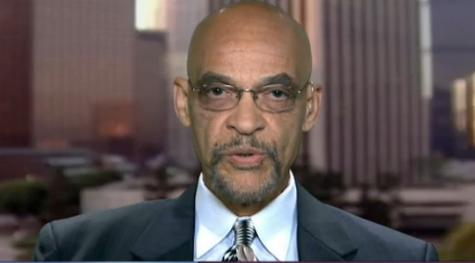Earl Ofari Hutchinson
This is the first in a periodic series examining the midterm elections. The series is based on excerpts from my forthcoming book, “The Midterms: Why They are So Important and So Ignored” (Middle Passage Press)
It’s no accident that those least likely to vote in the midterms are young, minorities, and lower-income persons. They are traditionally the most marginalized, and the least apt to be the target of any prolonged, focused, civic, or political engagement effort by not just the GOP but Democrats too. It becomes a two-way street, the parties make no real effort to engage them, and in return, there’s no real sense on their part of a need to engage in the political process. Policy issues are seen as remote, removed, or even non-existent in terms of having any direct connection or meaning to their lives.
Presidential and congressional candidates fiercely arm wrestle over ways to best bring down the deficit, reduce spending, decrease taxes, and get rid of wasteful programs. They also spar hard over how best to protect the interests of the middle class. It’s about votes, and a pro-middle-class, cut government spending line, appeals to centrists, and independents.
They, not the poor, are the voters the GOP and Democrats depend on to be the path to or back to the White House. The lack of engagement with the poor, disdain or at best indifference to them, coupled with the spate of laws that make it harder and harder for many persons to vote, all work in tandem to further ensure that millions tune out to politicians and politics.
The terrible reality is that parties are far more likely to woo, court, and aim their pitches at white middle-class voters in the crucial swing states. Minority, and especially minority low-income voters, and young voters are as the complaint is often heard taken for granted by the Democrats and routinely written off as not in play “for us” by the GOP.
The deliberate barriers that have been erected for poor and minority voters since 2010 to damp down their vote numbers are formidable. One is the availability and accessibility of polling places. There are fewer of them in minority communities. Surveys have found that in predominantly white suburban communities few persons say they have any problem finding a polling place. In African American and Hispanic neighborhoods, it’s just the opposite. The lag in these communities is not haphazard or accidental.
Election officials make the call on where to put a polling place. They base their decision on factors such as population, accessibility, and location recognizability. They can eliminate a station, or move it, at their discretion. There’s a Catch-22 here. Minorities vote in smaller numbers than whites. The smaller numbers mean fewer polling places in their neighborhoods.
The GOP-controlled state legislature in Texas, for instance, led the charge to close even more polling places in minority communities before the 2020 presidential election. The graph of the closures in one key county tells the sordid tale of suppression:
There’s also the issue of language and the ballot. A ballot must be in the language of the relevant minority group. However, there are ways to skirt that. One way is crunching the numbers. The law states that the number of Limited English Proficiency (LEP) citizens of voting age must exceed 10,000 for the ballot to be in the language of the voters. That’s 5 percent of all eligible voters. With all Native American reservation residents, the number must exceed 5 percent.
Another requirement is that the illiteracy rate of the minority population must also be higher than the national illiteracy rate. How and who determines what illiteracy is and who is illiterate? This is often little more than a judgment call. If the call is that there is no illiteracy issue or language issue in a particular voting district, that’s heavily or exclusively minority, the legal requirement about language ballots goes out the window.
Some states make strenuous efforts to ensure that ballots are in native languages such as Chinese, Gujarati, Korean, and Spanish. They also must ensure there is no discrimination in polling placement, that same-day voting extends longer, and that there is wide use of mail-in balloting. The problem is these states are mostly lockdown Democratic voter states. California, for instance, has majority-minority voting numbers.
GOP governors and GOP-controlled state legislatures have moved in the opposite direction in their states to narrow down or outright scrap measures to ease voting. Yet, in states such as Florida, Georgia, and Texas, there are significant numbers of Black, Hispanic, and Native American voters there. Hispanic voters in particular make up a big, growing, and potentially potent political force in key Red States:
In February, Biden announced he authorized millions more to the Democratic National Committee for voter reach. He and the Democrats will need every penny of it. The GOP House and Senate campaign committees for their part made clear they were going for broke in spending on the 2022 midterms.
The Democrats fate in the midterms will hinge on getting as many non-voters out and voting Democrat as possible.
Earl Ofari Hutchinson is an author and political analyst. His forthcoming book is The Midterms: Why they are So Important and So Ignored (Middle Passage Press) He is the host of the weekly Earl Ofari Hutchinson Show on KPFK 90.7 FM Los Angeles and the Pacifica Network Saturdays, 9:00 AM 90.7 FM.

